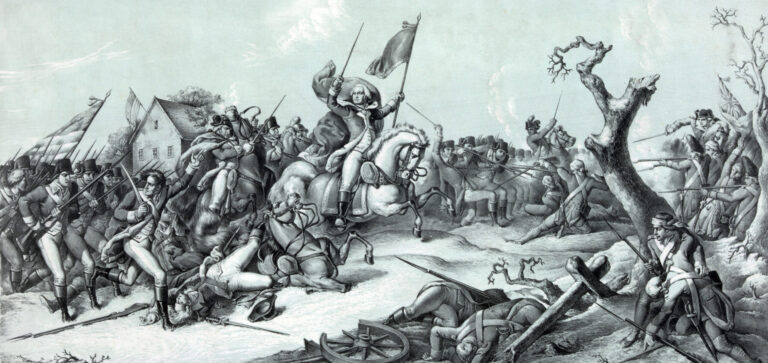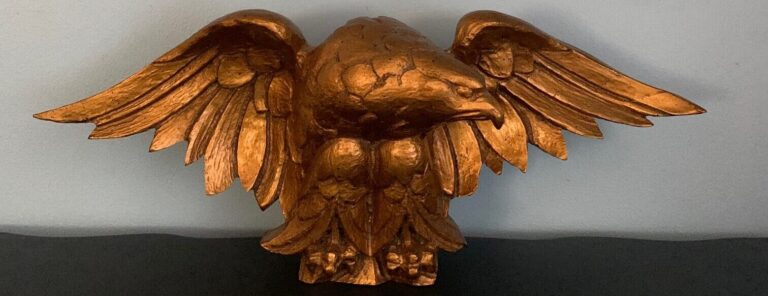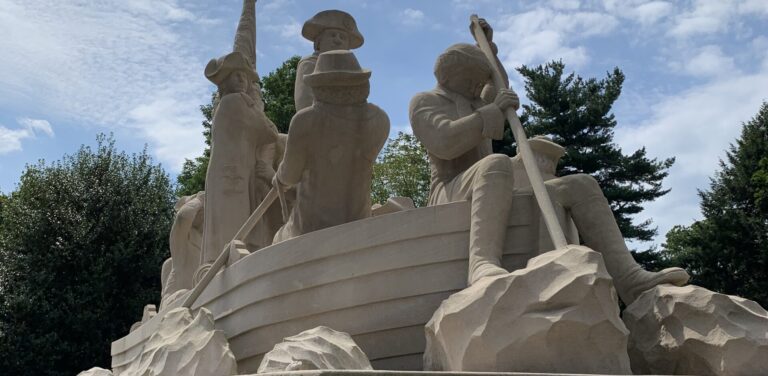Reminder: If you’re reading this in your email, you have to click on the link at the bottom or go to dpauthor.com and click on the Speaking of Which tab in order to view the actual blog post with the featured image.
Hello All –
I want to talk about where George Washington landed on Christmas night 1776. Today it’s called Washington Crossing State Park (WCSP) in Titusville (Hopewell Township), NJ, and it typically does not get as much publicity as Washington Crossing Historic Park (WCHP) on the Pennsylvania side of the Delaware River. The latter is located where the McConkey’s Ferry was and where the Continental Army embarked on that storied occasion. WCHP is where I’ve been hanging out for much of the last decade, notwithstanding my Garden State residence, because of the opportunity it affords me to give guided tours through the Friends of Washington Crossing Park. But for purposes of this post, I am in spirit (as well as fact) a New Jerseyan, and as such would like to share some information with you.
What is Washington Crossing State Park?
WCSP lies opposite its Pennsylvania sister park and is part of the same National Historic Landmark. It is where Washington’s army came ashore after crossing the Delaware River to assault the Hessian brigade occupying Trenton. In addition to its historical significance, the 3,500-acre park is well known for its trails and wildlife habitat. It includes a visitor center and museum that houses an extensive collection of Revolutionary War artifacts on loan from the Swan Historical Foundation, as well as the Johnson Ferry House, an early 18th-century farmhouse and tavern near the river that was probably used by Washington and his officers during the Christmas night crossing. The park is managed by the NJ State Park Service in the Department of Environmental Protection, which has a cooperative relationship with the Washington Crossing Park Association, the volunteer friends group that works to preserve, enhance, and advocate for the park and the history it represents.
I love the Pennsylvania park, but facts are facts – and they include these:
— The Swan Foundation collection of Rev War artifacts at WCSP vastly exceeds anything comparable on the other side of the river.
— Unlike the historic buildings in the lower park at WCHP (most of which date from the 1820’s or 1830’s), the Johnson Ferry House on the New Jersey side was built circa 1740 and so it was THERE when GW’s men stormed into NJ (in more ways than one) on December 25-26, 1776.
— For my money, the movie on the New Jersey side runs circles around the one shown across the river (but is about twice as long, which has something to do with it).
— There is a replica ferry boat adjacent to the Nelson House on the New Jersey side, which is one more ferry boat than you’ll find across the way.
Now, before I lose my job on the Pennsylvania side, let me hasten to add that you won’t find (in my opinion) a more hallowed patch of ground on the North American continent than where the McConkey’s Ferry Inn once stood, and as such it’s a must-see for history nerds and even those with only a casual interest in where America’s First D-Day operation was launched. Plus the early Americana ambience given off by the remnants of the village of Taylorsville on the Pennsylvania side is simply unmatched at WCSP—and then there are those replica Durham boats. (Note to Gettysburg aficionados: I’m not saying WCHP is THE most hallowed ground, so chill.)
But back to New Jersey . . .
What’s Happening at WCSP?
The park expects to break ground sometime this year on a new visitor center and museum expected to open sometime in 2026, but definitely in time for the annual reenactments of the Delaware River crossing that will occur that December and mark the semiquincentennial of American independence. The new structure will be much closer to the river’s edge than the current one; in fact, it will overlook the river and be in close proximity to the Johnson Ferry House. Inside, visitors will be greeted by a new, expanded, and exciting exhibit that is designed to immerse them in the “Ten Crucial Days” winter campaign that profoundly altered the course of the war for independence. This is exiting news that should fill local (and maybe not-so-local) history geeks with eager anticipation.
What Else?
Aside from all that, the new visitor center and museum at WCSP will house a significant original work of historical art that will be publicly displayed for the first time in more than a half-century, a priceless mural (an aspect of which appears above) that depicts Washington’s troops crossing the Delaware. Having languished in a dusty basement for 50 years, it was recently unearthed and is being restored by the Washington Crossing Park Association. Once the restoration is complete, this approximately 15.5-by-10-foot work will be displayed in the museum. Its creator, George Matthews Harding (1882–1959), was an American muralist and combat artist who worked in both world wars and painted this mural in 1921 for Trenton’s Taylor Opera House, where it hung until the building was razed in 1969.
At the time, the mural was coated with homemade wheat paste and Japanese rice paper, and rolled onto a custom-made cylinder with a view to restoring it for the new WCSP visitor center that was slated for completion by the 1976 bicentennial observance. The cylinder was transported to Ringwood Manor State Park in North Jersey, where it was placed in storage in a basement; however, the visitor center at WCSP was too small for this piece, and it was essentially forgotten for the next five decades.
The Washington Crossing Park Association took on the mission of determining if the mural could be restored for the park’s new museum by 2026 and, with the approval of the NJ Department of Environmental Protection, engaged Christyl Cusworth of Cusworth Conservation in Lambertville, NJ, to restore and frame the piece. The association launched a $60,000 fundraising campaign to support this effort with the help of large donations from Americana Corner, NJM Insurance, and private funders, as well as many smaller contributions from members and friends. More information is available here.
Final Words
Feel free to spread the word about what’s coming down the pike at WCSP in the near future.
And remember, Pennsylvania was Washington’s launching pad but New Jersey was where he landed—and where the battles were won. With the possible exception of South Carolina, it’s where more military engagements occurred in the struggle for America’s independence than anywhere else. Not for nothing is it known as the “Crossroads of the Revolution.”
P.S.
I wanted to close with an update on my current literary project. Winning the Ten Crucial Days: The Keys to Victory in George Washington’s Legendary Winter Campaign is now under contract with Brookline Books, an imprint of Casemate Publishers, and projected for release next winter or in the spring of 2025.
I’ve asked several people to review the manuscript, and the first (but hopefully not last) endorsement quote is in:
David Price’s latest book is an engaging account that provides the reader with a truly in-depth understanding of how Washington and his army were able to turn the tide in the winter of 1776-77. For any Revolutionary War buff, this book is a must read.
— THOMAS MADDOCK II, Historical Interpreter, Washington Crossing Historic Park
Thank you, Tom. Glad you enjoyed it.
Happy New Year, everyone.







